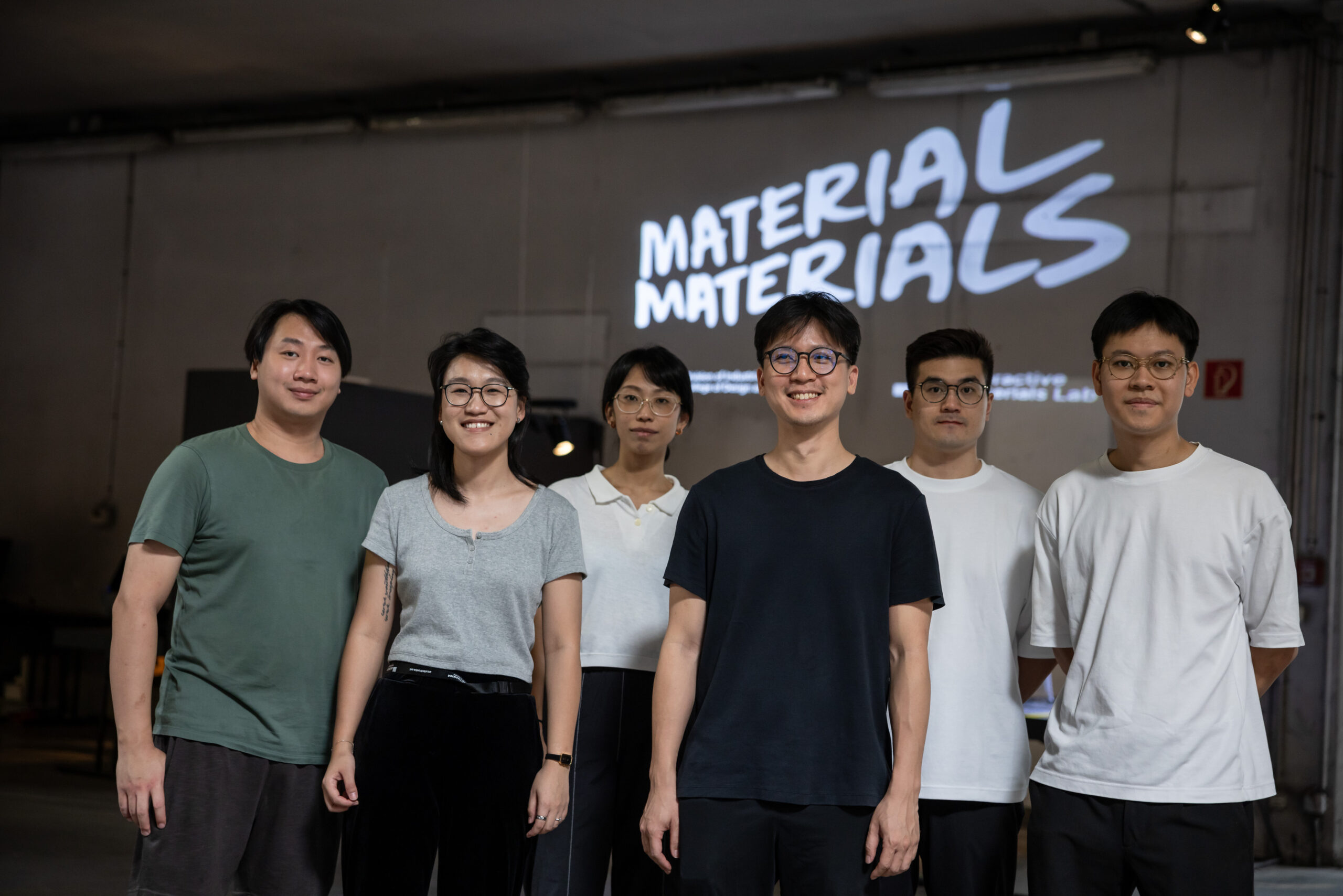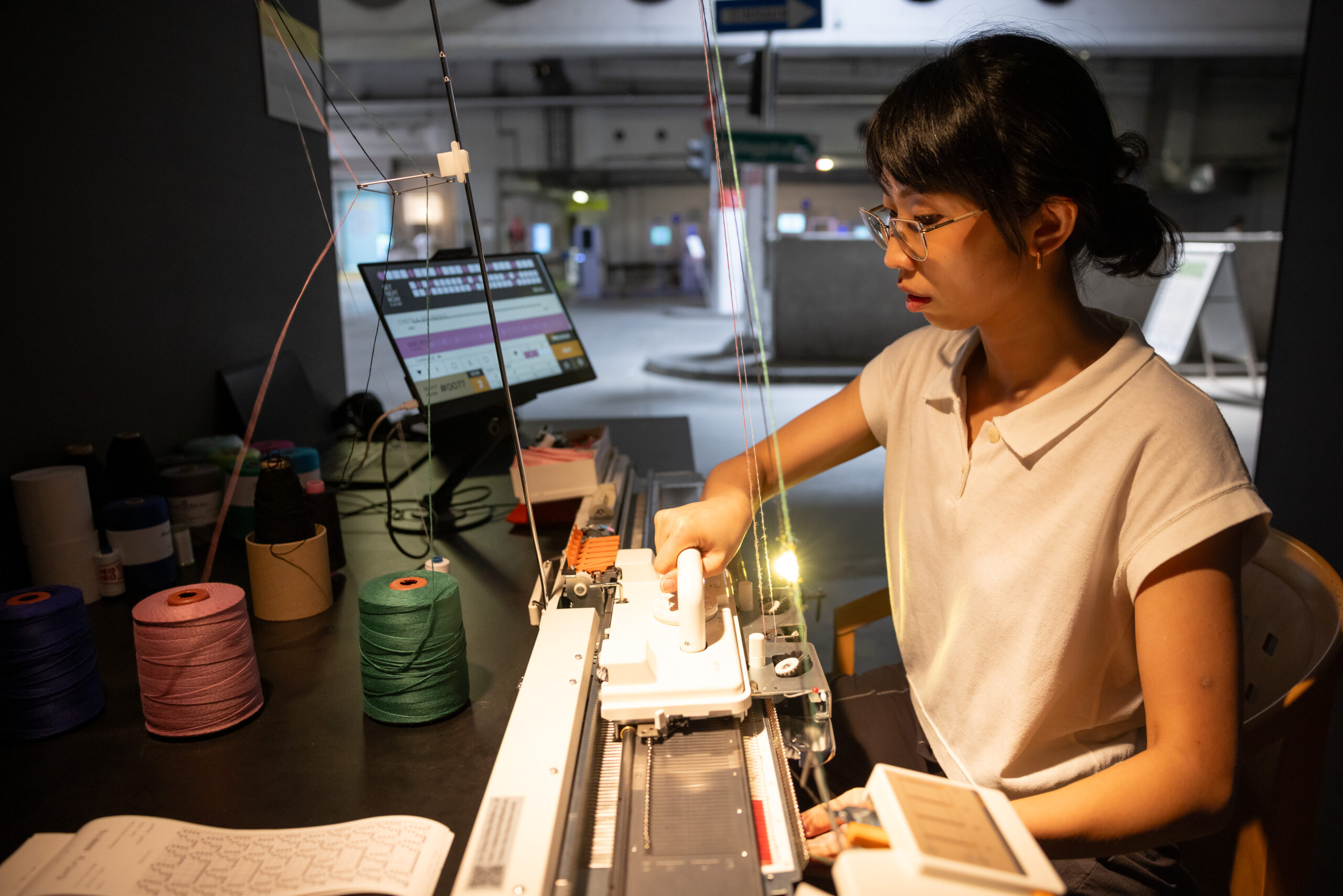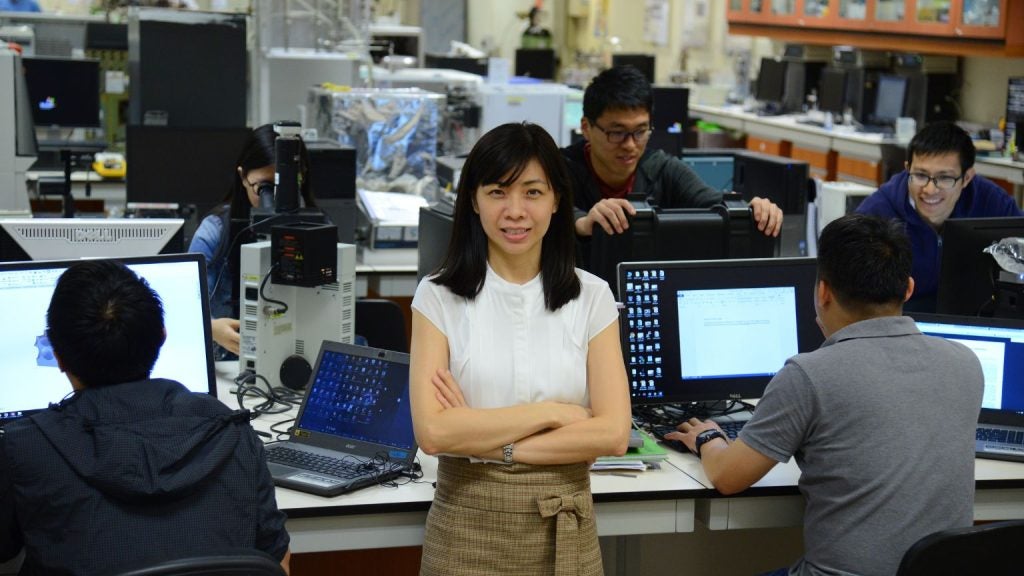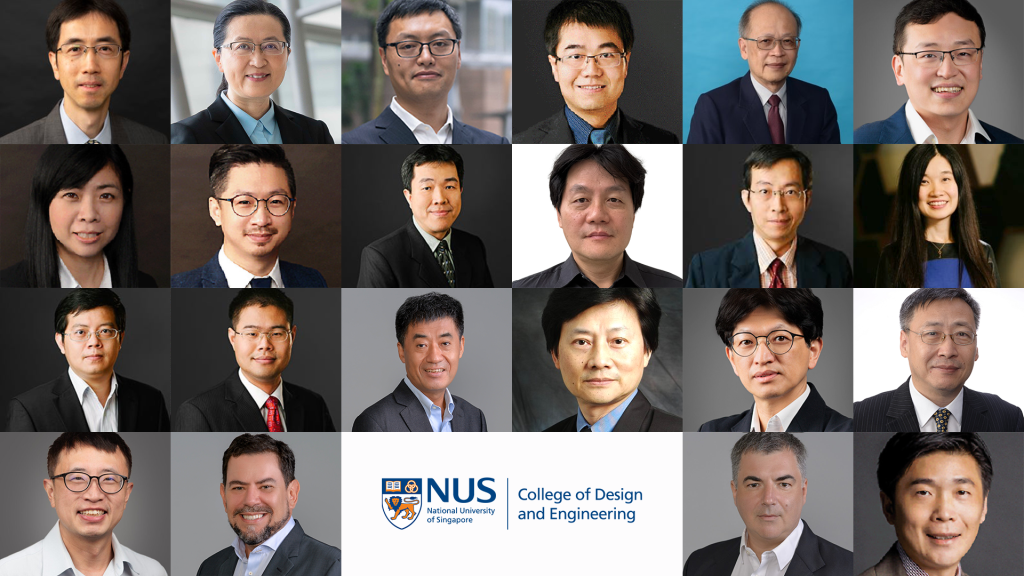
The Interactive Materials Lab, a research outfit from the Division of Industrial Design (DID), showcased five new projects in Ars Electronica. Held from 4 – 8 Sep 2024 at PostCity in Linz, Austria, the Ars Electronica Festival is the largest and most well-renown media arts festival internationally. The event was attended by more 112,000 visitors this year.
In line with the theme of “HOPE – who will turn the tide”, the festival aimed to spotlight people who wish to bring about change with their ideas, projects and actions.
Titled Material Materials, the DID exhibition deep dived into familiar, everyday objects and their respective potential in building interactive artefacts in the future. It hoped to challenge the conventional relationships between the user, designer and object and prompt visitors to look at it through a different lens.
Led by Assistant Professor Clement Zheng, the team provided a sensory experience for visitors to interact with the objects and consider their role in shaping the daily experiences that they are part of. He said, “Our goal at Ars Electronica was to find artistic ways to engage the public with the research that we do at the Division of Industrial Design. It was incredibly exciting to have showcased next to both established and new media art teams at Ars. We met so many new people who share the vision of shaping and presenting technology as a creative canvas of expression.” He added that the exhibition was a “significant milestone for us as a lab, as well as for the broader Division”, with the wide outreach of Ars Electronica providing an avenue for the team to showcase their work in the space of interaction and media design.
For the student designers, the event provided them with a unique opportunity to observe and learn from how other disciplines presented their work and research. PhD student E Ian Siew said, “This interdisciplinary exposure was crucial for us, as it broadened our understanding of communication ideas across fields. Beyond the experience itself, we were excited to gain insights into how our work is received by the art community. This feedback would be invaluable in helping us approach our research and creative processes with a more critical eye.”
The five projects were:
PaperTouch Wonder
PaperTouch Wonder explored the intersection between physical paper and digital touchscreen devices through three interactive 3D models. As paper and touchscreens are familiar materials in our daily lives, the team wanted to explore the potential of combining them to design tangible interactions.
Each model’s setup used a paper switch mechanism to facilitate interaction between the physical and digital realms. In the first diorama, a paper “finger” is seen poking at an eyeball displayed using the Pepper’s Ghost illusion, where a light source and angled reflection were employed to create an illusion. The second setup modeled a factory environment where users manipulated paper-based controls to manage water pollution levels. The third diorama immersed users in a marine ecosystem; where blowing on paper seaweed triggered the visual display of a distorted jellyfish, only visible through a mirror reflection.
PaperTouch Wonder hoped to encourage visitors to consider the potential of integrating technology with everyday materials to create interactive tangible interfaces.
Designers:
- Ye Qian (PhD candidate)
- Joshua Tan Jianhao (Year 4 student)
- Hannah Ang (Year 3 student)
- Asst Prof Clement Zheng (Principal Investigator)
Flow
Inspired by the flow of electrons through wires and electronic components in everyday devices, the team wanted to demonstrate a different way of manipulating electron flow. Using the digital camera as an example, the team wished to showcase the conversion of photons (light) into the movement of electrons and how this flow reverted into the waves of photons on screen.
On each Flow panel, the team created a matrix of photoresistors to detect light and a matrix of LEDs to emit light. Conductive traces connected each photoresistor to an LED within the matrix. The team designed four variations of the conductive traces to establish different relationships between the matrices. Instead of using a microcontroller or computer to manage logic and relationships, the team embedded the computing and logic directly into the electronic flow, physicalising it through the conductive traces. By making the programming logic visible, this physicalised logic engaged the audience, encouraging them to explore the fundamental elements of our modern electronic world—electronic flow.
Designers:
- Han Bo (PhD Candidate)
- Adam Choo (Year 3 student)
- Jared Lim (Year 4 student)
- Asst Prof Clement Zheng (Principal Investigator)
NECRO TROLL

Inspired by his love for video games, Zhen Zhou wanted to explore the roles between players, games and devices, especially that of the player. He mentioned, “Video games offer possibilities of experiences that you otherwise would not be able to get in real life... But what are you actually doing when you play? While in a game, Obi-Wan might be swinging a lightsaber and cutting down waves of battle droids, the player is probably just tapping the circle button on a gamepad.”
NECRO TROLL aimed to challenge the player's role by removing the context and rewards found in games. Devoid of any “firepower, bells, whistles”, the game was stripped down to just the player, the controls and the game. NECRO TROLL hoped to spark the visitors’ reflection about the relationship between players and games, and question who the ‘real master’ of the game is.
Designers:
- Yong Zhen Zhou (Co-Investigator)
- Asst Prof Clement Zheng (Principal Investigator)
Pneullaboration
Pneullaboration drew inspiration not only from the versatility of air but also from the concept of particle jamming, where loose, granular particles can be transformed into a rigid, solid-like state through the application of pressure. By exploring the interplay between inflation, vacuum, and jamming, the team sought to transform air from a passive element into a dynamic, shapeable medium with controllable stiffness, expanding the boundaries of how air can be utilised as a structural material.
Audience participation was central to this piece, as it required collective effort to bring the work to life. Each participant engaged in one of three roles: inflator, vacuumer, and morpher. Only through their collaborative actions does the sculpture’s potential unfold.
This exploration into "jamming inflatables" opened up possibilities for utilising air as a material in increasingly sophisticated applications. Future research may reveal new ways to harness air's potential for complex, adaptive structures that respond to environmental and human interactions.
Designers:
- Siew E Ian (PhD student)
- Assoc Prof Yen Ching-Chiuan (Co-Principal Investigator)
- Asst Prof Clement Zheng (Principal Investigator)
row ⨉ row

The team was curious about the paradox of modern machines - while these machines seem to make the production of items more seamless, they also complicate the user’s understanding of these machines and the hidden workings within them.
Having used a loom and punch card knitting machine, the team realised that the loom has more exposed components, whereas the punch card knitting machine is more ‘mechanical’, which can make using it complex and harder to decipher.
Using a digital interface, the team surfaced “functions” and limitations of the knitting machine. Visitors (users) were encouraged to suggest knitting inputs, while the maker became part of the machine to interpret and execute these inputs.
Designers:
- Sheryl Teng (PhD student)
- Vina Setiawaty (Year 3 student)
- Yu Yan Goh (Year 3 student)
- Asst Prof Clement Zheng (Principal Investigator)





